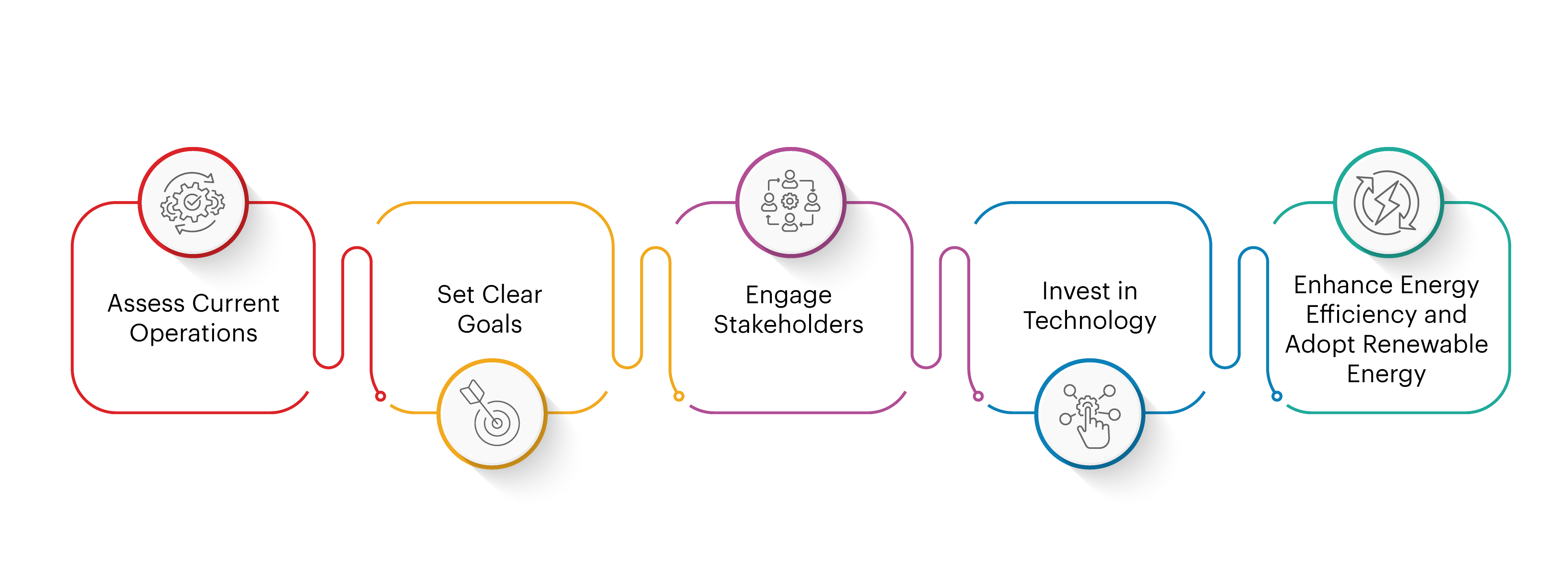Webpage

How Energy and Utilities Businesses can Move from FinOps to GreenOps
Energy and utilities businesses are under increasing pressure to adopt
sustainability while precariously balancing economic growth and
sterner government regulations.
Traditionally, the focus has been on FinOps (Financial Operations),
prioritizing cost management, efficiency, and profitability. However,
the pressing need to address environmental concerns and regulatory
pressures is pushing businesses to transition towards GreenOps
(Green Operations), which integrates sustainable practices into
core operational strategies. In this blog, we'll discuss how
energy and utilities businesses can successfully make this transition.
1. Understanding FinOps and GreenOps
• FinOps optimizes financial performance through cost management, budget allocation, and forecasting. It involves strategies like reducing operational costs, improving asset utilization, and maximizing return on investment.
• GreenOps on the other hand, emphasizes environmental sustainability by integrating eco-friendly practices into business operations. This approach seeks to minimize carbon footprints, enhance energy efficiency, and endorse using renewable resources. The ultimate goal of GreenOps is to balance economic viability and environmental responsibility.
2. The Need for Transition
Several factors responsible for FinOps to GreenOps transition in the energy and utilities sector include:
1. Regulatory Pressure: Governments worldwide are implementing stricter environmental regulations, requiring companies to reduce carbon emissions and adopt sustainable utility management practices. For instance, by 2030, the European Union plans to cut GHG emissions by 55% from 1990 levels. Likewise, the U.S., having reentered the Paris Agreement, is dedicated to substantially reducing its emissions.
2. Consumer Demand: There is an increasing consumer preference for green energy solutions. According to a recent survey, 73% of global consumers want to pay a premium for sustainable products. This change in consumer behavior drives companies to integrate sustainability into their products to stay competitive in the market.
3. Investor Expectations: Investors are placing greater emphasis on Environmental, Social, and Governance (ESG) criteria, encouraging companies to adopt sustainable business practices. Per the Global Sustainable Investment Alliance, sustainable investments could reach over $50 trillion by 2025 as more investors demand transparency and accountability in ESG performance. It highlights the increasing influence of sustainability on investment decisions and corporate strategies.
4. Technological Advancements: Innovations in clean energy technologies, such as solar, wind, and battery storage, make it easier for companies to adopt green solutions. The price of solar photovoltaic electricity has dropped by 85% over the past decade, making it one of the most cost-effective energy sources. Similarly, advancements in battery storage are enhancing the reliability and efficiency of renewable energy systems.
3. Steps to Transition from FinOps to GreenOps
Here are a few steps on how energy companies can transition from FinOps to GreenOps:

1. Assess Current Operations: Conduct energy audits for data centers and office spaces to identify areas for improvement. Businesses can save up to 30% on costs by following recommendations from energy audits, according to the U.S. Department of Energy.
2. Set Clear Goals: Set measurable sustainability goals that align with the company's strategic objectives. Leading IT firms such as Google and Microsoft have pledged to achieve carbon neutrality and utilize 100% renewable energy. Strive to lower greenhouse gas emissions in accordance with the Paris Agreement's goal of controlling global warming below 2°C. For instance, Microsoft has set a target to become carbon-negative by 2030.
3. Engage Stakeholders: Involve employees, customers, investors, and regulatory bodies. Those with highly engaged employees experience 21% higher profitability. Highlight the benefits of sustainable practices, given that 81% of global consumers believe companies should play a role in environmental improvement.
4. Invest in Technology: Leverage advanced technologies like smart grids, energy management systems, and IoT devices. If scaled up, digital technologies have the potential to cut emissions by 20% in the three highest-emitting sectors—energy, materials, and mobility—by 2050. Invest in energy-efficient data center technologies like advanced cooling systems and virtualization. Per the latest annual Uptime Institute survey, data center power usage effectiveness (PUE) has improved from 2.5 in 2007 to an average of 1.58 in 2020.
5. Enhance Energy Efficiency and Adopt Renewable Energy: Improve energy efficiency by upgrading IT infrastructure and optimizing systems. For instance, according to the U.S. Department of Energy, LED lighting uses a minimum of 75% less energy and lasts more than 20 times longer than incandescent lighting. Consider purchasing renewable energy credits (RECs) to offset carbon emissions.
4. Challenges and Solutions
Transitioning from FinOps to GreenOps in the energy sector is not without challenges. Common obstacles include:
1. High Initial Costs: Sustainable technologies and practices often require significant upfront investments. However, reduced environmental impact and long-term savings from energy efficiency can offset these costs. Financial incentives and grants can also alleviate the burden. Innovative financing options such as green bonds can make these investments more accessible.
2. Resistance to Change: Employees and stakeholders may resist changes due to unfamiliarity or perceived inconvenience. Address this by providing education, demonstrating the benefits, and involving them in decision-making. Creating a culture of sustainability can help develop acceptance and enthusiasm for new initiatives.
3. Regulatory Compliance: Navigating the intricate landscape of environmental regulations can be challenging. Stay updated on regulatory changes and consult with legal experts to ensure compliance. Regular audits and compliance training sessions can further support adherence to these regulations.
Conclusion
Transitioning from FinOps to GreenOps is a strategic imperative for energy
and utilities businesses. By incorporating sustainable practices into
their operations, organizations can comply with regulatory requirements,
meet consumer expectations, and secure long-term financial stability.
Embracing GreenOps is not just about preserving the environment; it's
about future-proofing the business and contributing to a sustainable future.
Intelliswift's pioneering energy and utilities solutions empower enterprises
to evolve into hyper-connected, innovative organizations. By enhancing digital
adoption and leveraging AI and machine learning for predictive maintenance,
we boost grid resilience and accuracy while accelerating decarbonization.
Our ethical, data-driven approach ensures improved safety and faster
decision-making across the value chain.



